My mom, Barbara, was a fantastic cook and a lot of fun. I miss a great many things about her, and her baking is high on the list. Growing up with her nightly home-cooked, gourmet meals and her amazing fresh breads, cakes, cookies, pies and pastries inspired me to become a pastry chef. I have fond memories of her baking Stollen every year just after Thanksgiving, of the intoxicating smell as it baked in the oven, the scent of rum soaked raisins, yeast, citrus and delicate spices wafting through the house.
Stollen is German holiday bread made with candied citrus peel, raisins and almonds. The first Christmas Stollen was baked in 1545, and though it has evolved since then, it remains a German holiday tradition.
Stollen makes me happy. It reminds me of my mom, of fun times with family and friends during the holidays. We learned the tradition from the German architect Rainer Schildknecht. Rainer, his wife Pat, and their daughter, Leah are very dear family friends. Making the bread is one of the many fond memories we share with their family.
In my family ‘Weihnachts-Stollen’ (Christmas Stollen) as we called it was a tradition for Christmas almost as essential as the Christmas tree. My grandmother and later my mother baked them a few weeks before Christmas. They rested then in our cold basement and the first one was cut and served on Christmas Eve after dinner with a few glasses of hot, spiced wine, and the Christmas tree was lit (for a while) with real candles. For me the magic of Christmas became alive again after Pat and I had our daughter. I remembered the tradition and began to bake the Stollen like my mother did.
Rainer Schildknecht
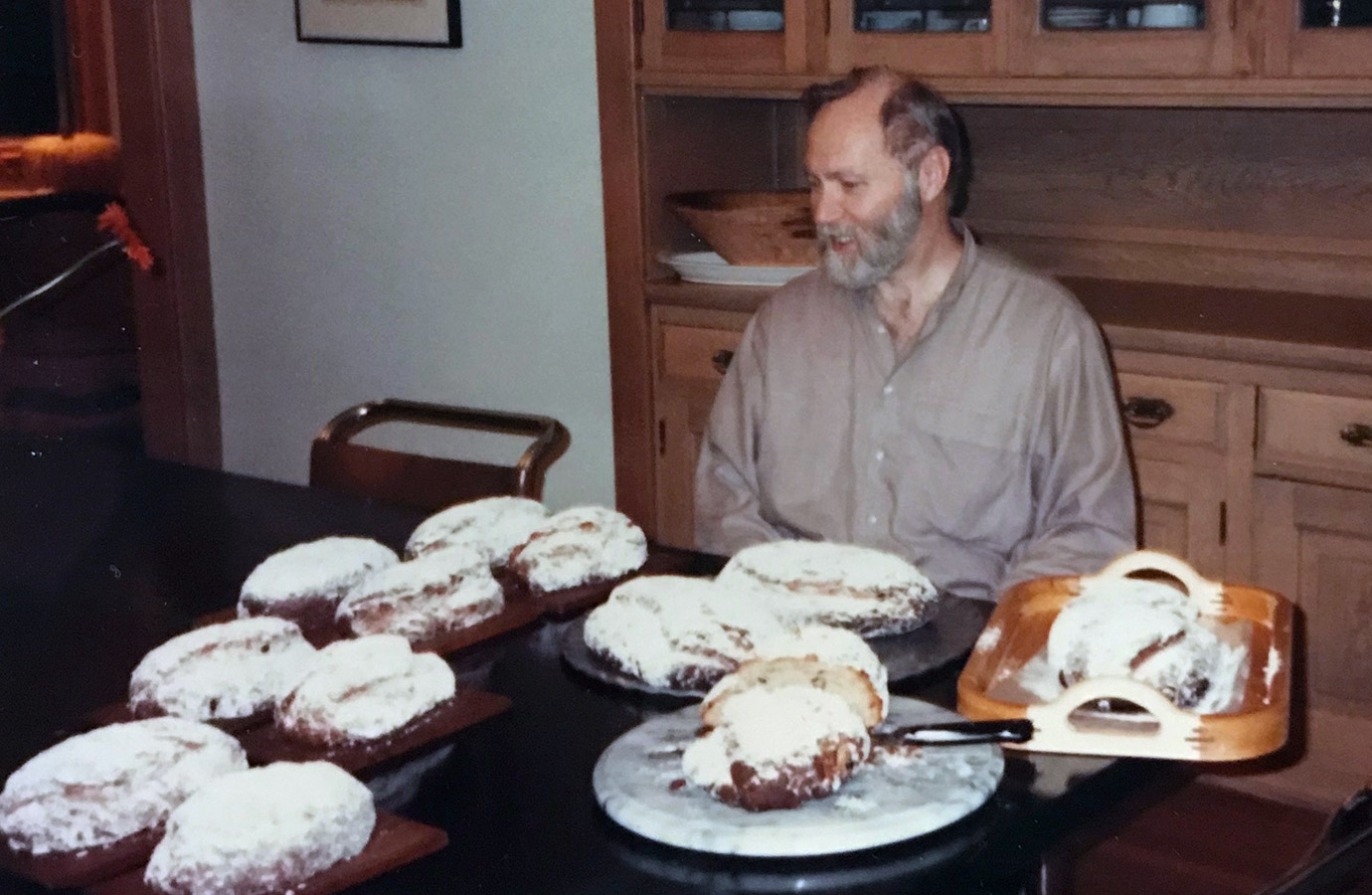
I recall there being some very strict rules:
- You must use candied orange and lemon peel (orangeat and zitronat). Rainer hand carried his from a tiny shop in Munich to Chicago.
- You must cut the almonds correctly. Rainer says they should look like a “lady’s shoe.”
- You must shape the loaves correctly.
- You must not eat the Stollen until it has “aged” for between 3 to 5 weeks to be ready for Christmas Eve.
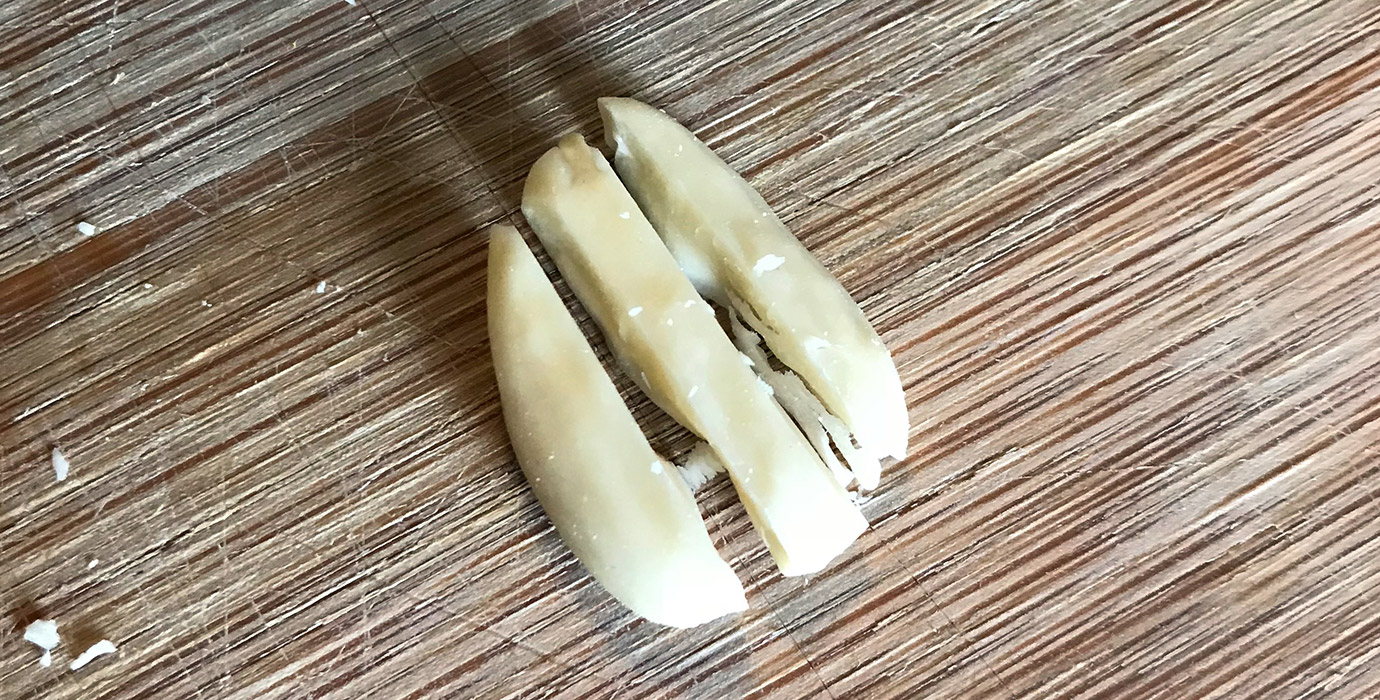
Rainer taught my mom to make Stollen sometime in the early 1980s, and after making it together for a couple of years, she started making it on her own. A favorite story about making the bread comes from the first time they worked on it together.
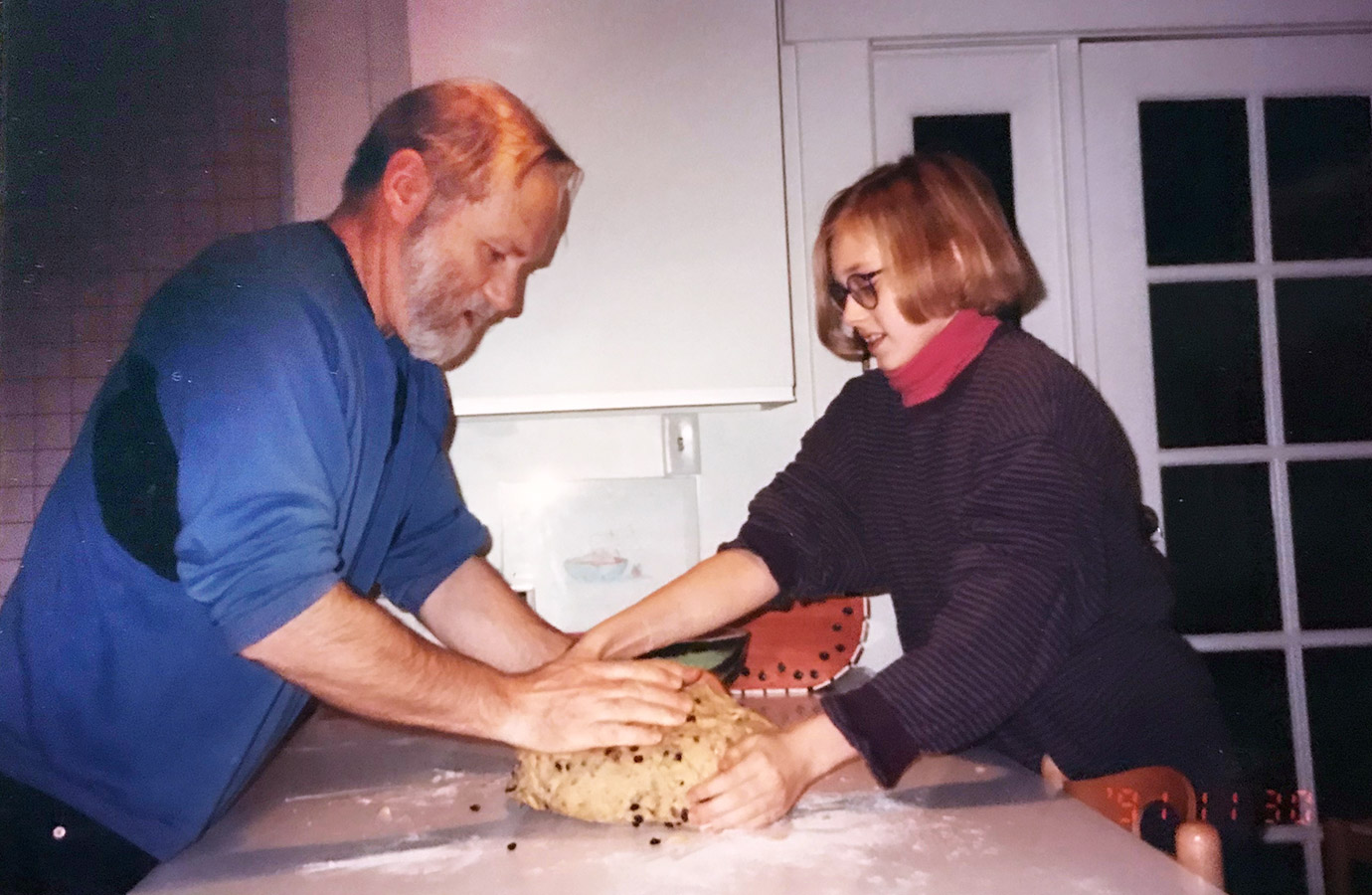
Rainer demonstrated how to slice the almonds, of which there were almost 2 pounds. He then proclaimed, somewhat mysteriously, that he needed to go “change his socks” and left the kitchen. My mom proceeded to cut the almonds, one at a time as instructed. Either he had an endless variety of socks and tried on each pair, or something very important distracted him. Whatever it was, he returned about an hour later, just as she finished slicing the last almond.
Ever since that day, “changing my socks” is a fond family euphemism for when we want to get out of doing something tedious.
My mom made tasting one of the warm loaves, fresh out of the oven, part of our family tradition. Pat, Rainer’s wife, would sneak over to our house to taste my mom’s fresh bread, which was verboten at her house where Stollen traditions were strictly observed. It is SO yummy eaten warm! However, it is even more delicious after it ages for a few weeks. Really, it’s worth the wait. But how can you possibly know that unless you taste a loaf fresh out of the oven?
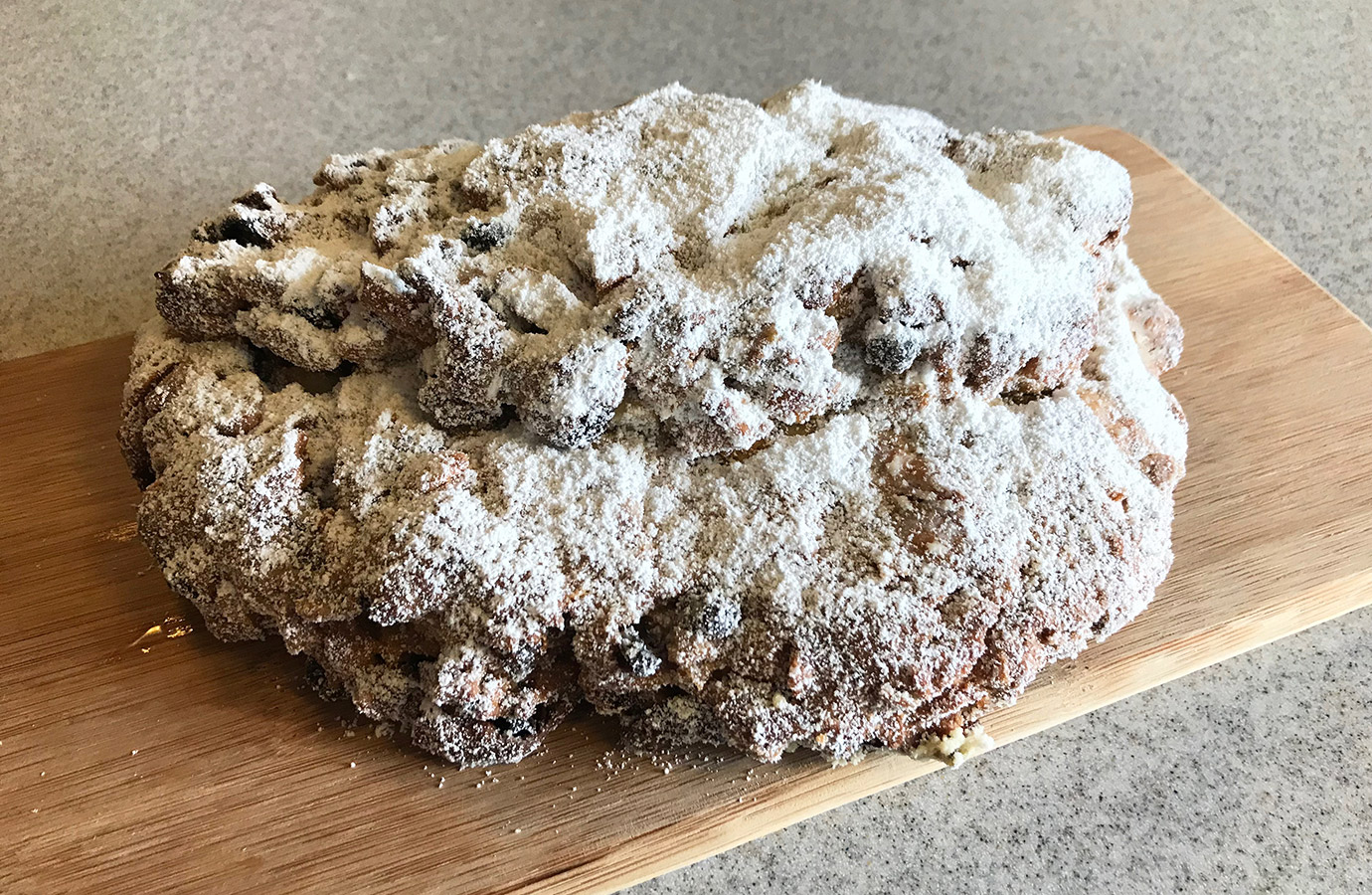
My mom made Stollen a family tradition, but when she passed just over 3 years ago, the tradition passed with her. In the back of my mind I always thought, that I should start making the holiday bread myself. Then the first week of February I received a package containing something I had been anxiously awaiting: my mom’s two wooden recipe card boxes. Looking through them I was flooded with memories of her wonderful cooking, as I found her 1970 Manicotti recipe (pulled from a magazine, folded and yellowed), her French bread, her chicken liver pate, her tomato aspic… and her handwritten Stollen recipe.
I am thrilled this year to add the making of Stollen to my family’s post-Thanksgiving traditions– along with the appearance of the Elf on the Shelf, and going to the National Forest near by to cut down our Christmas tree. I pass the recipe on to you. Maybe it will become a family tradition for you, too! Once you taste it, I promise, you will want it again.

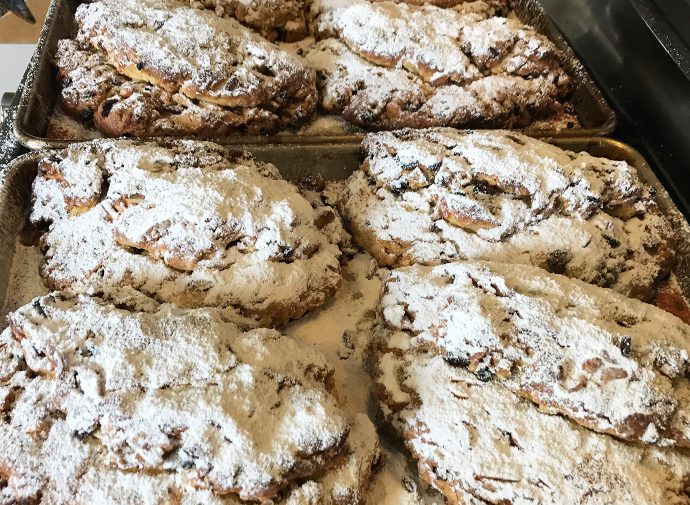
Thank you, Anna, for the background life-story on Weinachtsstollen and for sharing the recipe. I will follow your recipe including the time-saving hints and am looking forward to sampling after the baking and then patiently waiting the required time as I bring them to our ski resort at Christmas.
Best pastry Chef!
Thank you, Miguel! 🙂
Roy – Thank you for your kind comments! Please let us know how your Stollen turns out – Once you taste the first loaf, it will be hard to imagine that it gets even better… but it WILL! Happy Holidays, and happy skiing! 🙂 Anna
Dear Anna, I spent the weekend of Dec 2-3 preparing the stolen according to your recipe. The fresh product was incredibly delicious and devoured quickly! I shared another loaf with Lisa and her husband over dinner the other night and we all enjoyed the “aged” version as well. I sent some to friends and am bringing a couple loaves to Snowbird, Utah where we will be skiing for the next two weeks. Thank you for sharing your family recipe with the world!! All the best for happy holidays, Roy.